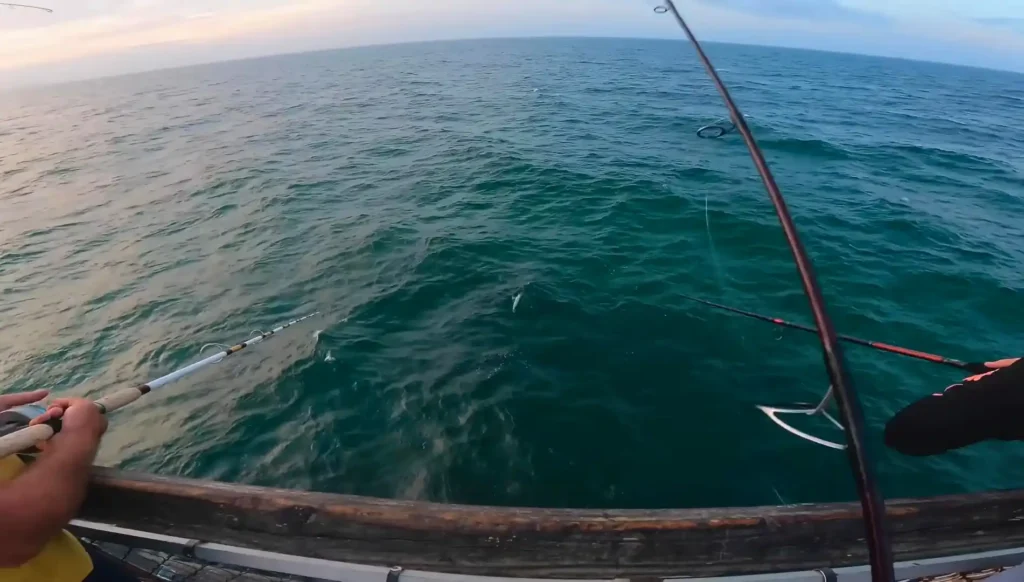
You might be a beginner wondering about different places to go fishing or a professional obsessed with pier fishing. Well, as an angler, we all have a part of our fishing memories that is related to the pier. The fun thing about the pier is that it is a fun sport and allows you to catch a diverse range of species. It also requires minimal equipment so it’s not that much of a headache for you.
When it comes to pier fishing, there are infinite combinations that you can go for the rod setup. However, it depends on the kind of angler you are, the techniques you are good at, the environment you want to choose, the size of the fish you want to catch, etc. So, the choice is always going to be yours. However, with my experience, I can give you an overview of different things that can help you make the right choice for yourself.
What is pier fishing?
Pier fishing is a popular saltwater fishing sport and is often considered a hybrid method for angling. The pier is a long platform that extends over the water allowing the anglers to have easy access to shore fishing blended with over-water boat fishing. It is also very popular among beginners because of the ease of access to a variety of fish.
Fishing rods and reels for pier fishing
Choosing a fishing rod and reel depends on the type of angler you are. However, some specific rods will benefit you during your pier fishing adventures.
Spinning rod:

These rods are known for their versatility and are widely used by anglers throughout the world. Their reel seat is on the underside of the rod which is made of spinning reels. These fishing rods are suitable for a wide range of freshwater and saltwater fishing. They are easy to use which makes them a better option for beginners.
Casting rods:
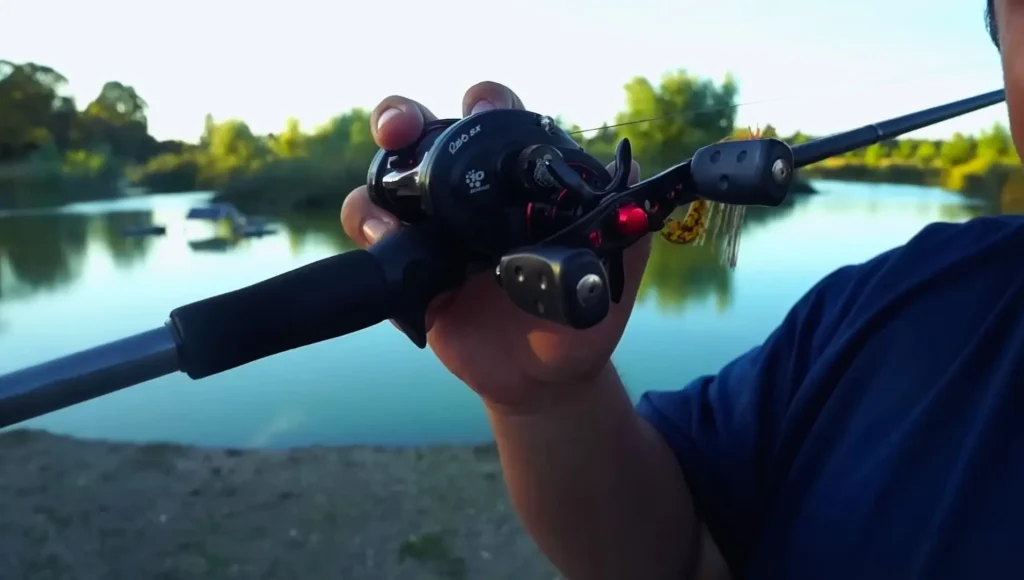
These fishing rods are designed to be used with baitcasting reels. They have a trigger grip which makes one-handed casting control comfortable. They are good at handling larger fish. Experienced anglers often go for casting rods because they offer accuracy and control. Techniques such as flipping, pitching, and casting heavier lures, suit these rods.
Surf rod:

For longer casting distances, the surf rods are very much suitable. If you need to reach deep waters in pier fishing, these rods do an excellent job for you. Their length varies from rod to rod. However, these rods are usually longer. They are ideal for handling heavy sinkers and large baits effectively.
Conventional reel vs spinning reel Pros and cons for pier fishing
Spinning reels are very popular among pier anglers. However, conventional reels are also very suitable if you can get a hold of them. Below I have provided you an analysis of both of the reels based on my own experience. It might help you in choosing the right reel for yourself.
Conventional reels:

Conventional reels are very powerful. And are known for their strength and line capacity. When you have to target larger and more powerful species that you encounter around piers, such as kingfish, tarpon, or large snook, you go for conventional reels. These reels are very accurate at casting. They are known for their casting distances which makes them an ideal choice for long casts from a pier. We know that they are powerful and take a bit of practice to get used to. However, you don’t have to be afraid of using these reels. With a little bit of practice, you will be good to go. These reels help provide you with better line control. This way you can handle lures and baits quite easily. One tip for you is that your thumb should be on the reel to avoid a bird’s nest. They have a robust drag system that can handle the heavy loads associated with battling large fish. For bigger fish go for a heavier braid line. Working with convention reels can be time-consuming, so you should be aware of that. But once you get a hold of these, you like staying with these reels. You learn with time that these reels are versatile and can handle a wide range of techniques.
Spinning reels:

Spinning reels are very easy to use especially if you are a beginner. Their design is simple and smooth. Casting and retrieving with these reels are pretty much straightforward. These reels are easy to learn and are known for their convenience. They also are very good at casting. If you have to go for casting where precise placement of baits or lures is essential, then go for spinning reels. Casting near structures and targeting fish that are close to the pier is easier with spinning reels. Compared to other reels, the backlash is not a big problem. Working with spinning reels is mostly smooth which makes them ideal for fishing around pilings or other obstacles. When you are working with spinning reels, chances of tangling are very low which makes them suitable for beginners. Bird’s nest is not an issue with spinning reels. They can also handle a wide range of pier fishing techniques so you don’t have to worry too much.
If you need an honest opinion, both of these reels are good. However, I will recommend you go for spinning reels first as a beginner. Their smooth interface will help you a lot in getting used to fishing rods. Then you can move further towards other reels. There are a lot of companies you can go for such as Penn, Daiwa, or Shimano.
What should be the size of your reel for pier fishing?

The reel size can vary for pier fishing. It depends on the conditions and the species that you are about to target. However, most anglers say that a reel in the 4000 to 7000 size range is often a good choice for pier fishing. This range allows you to hold a good range of line capacity for your fishing rod.
4000 to 5000 series:
4000 series is a good choice if you have to go for pier fishing. You can get a good balance between line capacity and management with these reels. Small to medium-sized fish can be handled easily with this series. The 5000 series is good with medium-sized species. The line capacity increases in the 5000 series. This series can provide you with more flexibility when casting or handling a fish.
6000 to 7000 series:
In this range, you get a greater line capacity compared to the previous one. When you are looking to target larger fish species such as redfish, snook, flounder, sheepshead, or even small sharks, this range becomes ideal. This range provides you with a better strength to handle big fish. It also gives you a better line capacity so you don’t have to worry about battling with larger species.
The fishing line for pier fishing
There is a vast range of fishing lines out there. However, I will enlist the most commonly used lines for pier fishing so you can choose easily.
1# Monofilament Fishing Line:

Monofilament lines are made from a single strand of synthetic material, mainly from nylon. Its various features range from being versatile and widely used for various fishing applications. It provides good knot strength and manageable memory, i.e. it can hold a spool’s shape with ease. It offers you with an impressive amount of elasticity, which is preferable to withstand shocks from fish strikes. It is available in multiple colors and thicknesses depending on your preference. The stretch and elasticity of these fishing lines are very much suitable for fighting with powerful fish.
2# Fluorocarbon Fishing Line:

Fluorocarbon is formed from a denser material than monofilament, providing better invisibility underwater. Its features include that it’s practically invisible in water, making it suitable for finicky or line-shy fish. It provides abrasion resistance because of its being from denser material, and it’s also less likely to weaken from exposure to sunlight. It is low-stretched in nature and provides you with enhanced sensitivity and hook-setting power. It sinks in water, making it ideal for subsurface applications. Fluorocarbon is a good choice for leader material especially when targeting leader-shy fish like snook or snapper.
3# Braided Fishing Line:

These are constructed by weaving together multiple strands of synthetic materials like Dyneema and Spectra. Braided lines are known for their exceptional strength-to-diameter ratio, allowing for higher pound-test ratings. Its minimal stretch provides you with superior sensitivity and quick hook sets. It is thin and limp, which helps you achieve longer casting distances. It is highly durable and resistant to abrasion. As these lines have no stretch, they become an excellent choice for pier fishing, especially when you have to target larger and more challenging species.
What is the ideal fishing line for me?
When it comes to pier fishing, I do narrow down my choices. We know that monofilament is stretchable whereas braided is not. So, for me, braided is a better option if I have to go for longer casts as it helps me in detecting even the slightest bit of movement. Monofilament, on the other hand, might not be an ideal choice for detecting subtle movements.
How much fishing line to spool for pier fishing?
Each fishing line comes with its weight. You should Spool around 150 to 200 yards of braided line. If you don’t know how much your reel can handle? You can check it on the side of your reel. It will tell you how much of the line can be spooled over it exactly.
Rod length, power and action for pier fishing
Length, power, and action are some factors that you need to keep in mind for all kinds of fishing. They determine what kind of rod will suit your fishing requirements.
Rod length:
The length of your fishing rod is an important factor that plays a major role in pier fishing. Rod length is crucial because it can impact your casting distance, accuracy, and overall fishing experience. You cannot simply choose a one-rod length for all environments. There are a lot of factors that define the ideal length and it keeps varying. The rod length ranges from smaller rods to ultra-long rods. Each length has its cons and benefits.
What is the ideal rod length for pier fishing?
The rod length should not be too big or too small for pier fishing. It should fall somewhere between 8 to 9 feet. A rod longer than this might become hard for you to handle. Whereas a smaller one will not be very helpful in longer and more efficient casting.
What is the ideal rod power for pier fishing?
For pier fishing, I recommend you go for medium-heavy power. The reason behind it is that a heavy rod is very stiff whereas a lighter rod is way too flexible. So, a medium-heavy rod will do you good as it will create a balance between both of these required factors.
What is the ideal rod action for pier fishing?
Rod’s action may vary according to your needs. For instance, a slower action rod is recommended for fish that have a soft mouth as it will be very good at handling it. A fast action rod in this case will simply rip the hook out of the fish’s mouth. So, you need a softer rod that can help you gently get hold of the target fish.
In case if you are not familiar with these terms “rod action and power“, read our detailed article on it
What is the ideal line weight for pier fishing?
The line weight varies according to the fish that you are aiming to target. If your target fish is smaller such as panfish or trout, go for the 6 to 12 pounds range. If the target fish is larger such as snook, redfish, or smaller gamefish, go for the 12 to 20 pounds range. Line weight above these ranges is used to target large predators such as sharks or tarpons.
Fishing gear for pier fishing
Now that you are aware of the different kinds of rods and reels for your pier fishing, let us move toward the fishing gear that goes for pier fishing such as swivels, sinkers, floaters etc.
Lures and baits for pier fishing:
Plastic Worms:
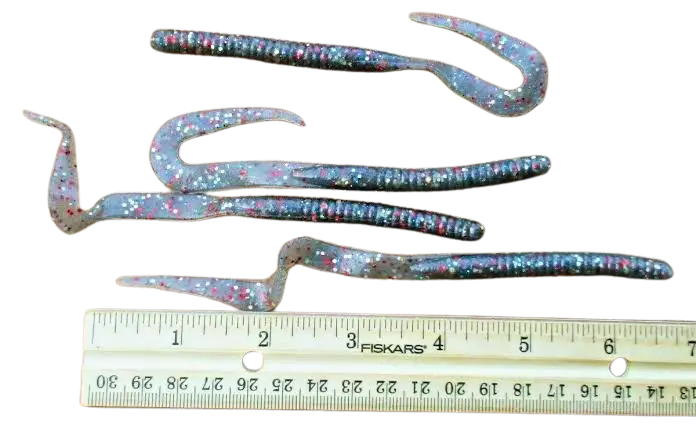
Plastic worms are available in a range of sizes, colors, and shapes. They are a flexible and successful option for various fish. The most popular methods for using plastic worms include drop-shotting, Texas rigging, Carolina rigging, and wacky rigging. Such worms have a lifelike motion, are adaptable, and come in a variety of colors and sizes to match the local baitfish, which is their main advantage.
Crankbaits:

Crankbaits are lures with a diving lip that have a firm body. They may quickly cover water because they closely resemble baitfish. Casting and retrieving, diving to various depths, and mimicking injured baitfish are common strategies utilized with this kind of bait. This bait’s ability to locate target fish, cover a large area of water, and elicit reaction strikes is one of its benefits.
Jigs:

Jigs bait have a lead head and a body that is skirted. They come in a variety of styles, such as flipping jigs, football jigs, and swim jigs, and are incredibly flexible. Jigs are most frequently fished with the following methods: flipping, pitching, dragging on the bottom, and swimming close to cover. They work well for accurate presentations, fishing dense cover, and crawfish or baitfish impersonation.
Topwater Lures:
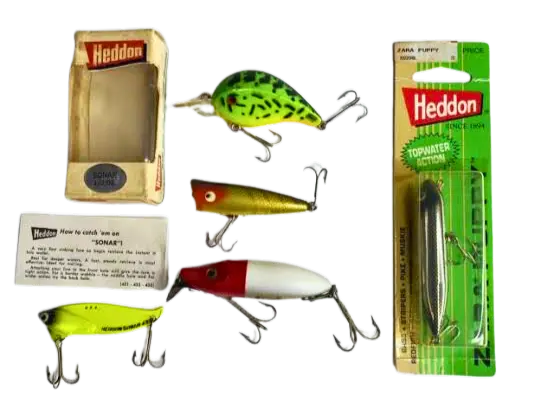
Some fish are drawn to topwater lures because they float on the water’s surface and cause surface disturbance. They may provoke powerful blows. The most popular methods with this kind of bait are frogging, popping, buzzing, and walking the dog. These baits work well in calm or shallow water, have a dynamic surface motion, and produce noticeable strikes.
Soft Plastic Creature Baits:

Various aquatic species, including crayfish and amphibians, are mimicked by creature baits. They come in different sizes and shapes. Texas rigging, Carolina rigging, flipping, pitching, and jig trailers are prominent methods employed with this kind of bait. They are good for luring fish that are hiding in the cover because of their realistic profiles, adaptability for various methods, and attractiveness.
Live Bait:
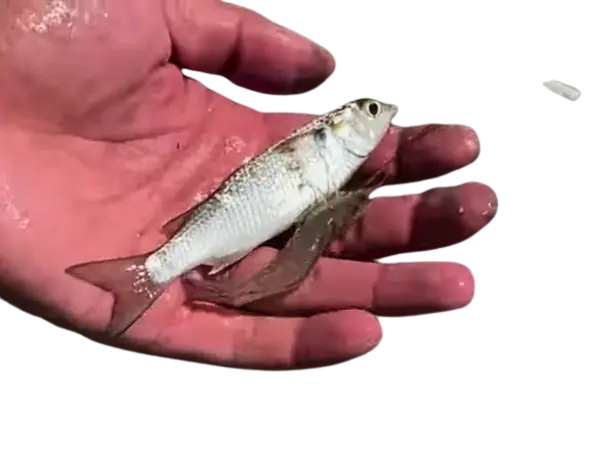
Minnows, Shiners, nightcrawlers, and crayfish are examples of live bait that can be used for pier fishing. When other lures don’t work, live bait can be productive. Live bait is often fished using a slip bobber rig or on a hook. It offers several benefits, including a natural fragrance and movements that are frequently appealing to the target fish.
Spoons:

These lures are known for a specific shape and wobble when retrieved. This imitates a wounded baitfish that becomes effective in catching fish. These are good for casting from piers to target several species such as mackerel, bluefish, etc.
Artificial shrimps:

These shrimp lures are made of soft plastics and are used to mimic one of the primary prey items for pier species. These lures can be rigged with the help of a weighted hook or a jighead. These lures are effective for fish like trout, redfish, and snook.
Swivels for pier fishing:
Ball-bearing swivels:

These swivels are a very good option if you have to target fish that are larger and more powerful. They are good at providing you with smooth rotation. They reduce the chances of line twist and offer anglers excellent strength and durability during their adventures. Heavy-duty pier fishing needs ball-bearing swivels, almost all the time.
Barrel Swivels:

These swivels are known for their variety. They are commonly used among anglers and are found in various sizes and strengths. A wide range of pier applications suit these swivels. As you can choose from a vast variety, make sure that you choose the ones that have smooth rotation and high-quality construction as it will help you in minimizing the line twist.
Snap swivels:
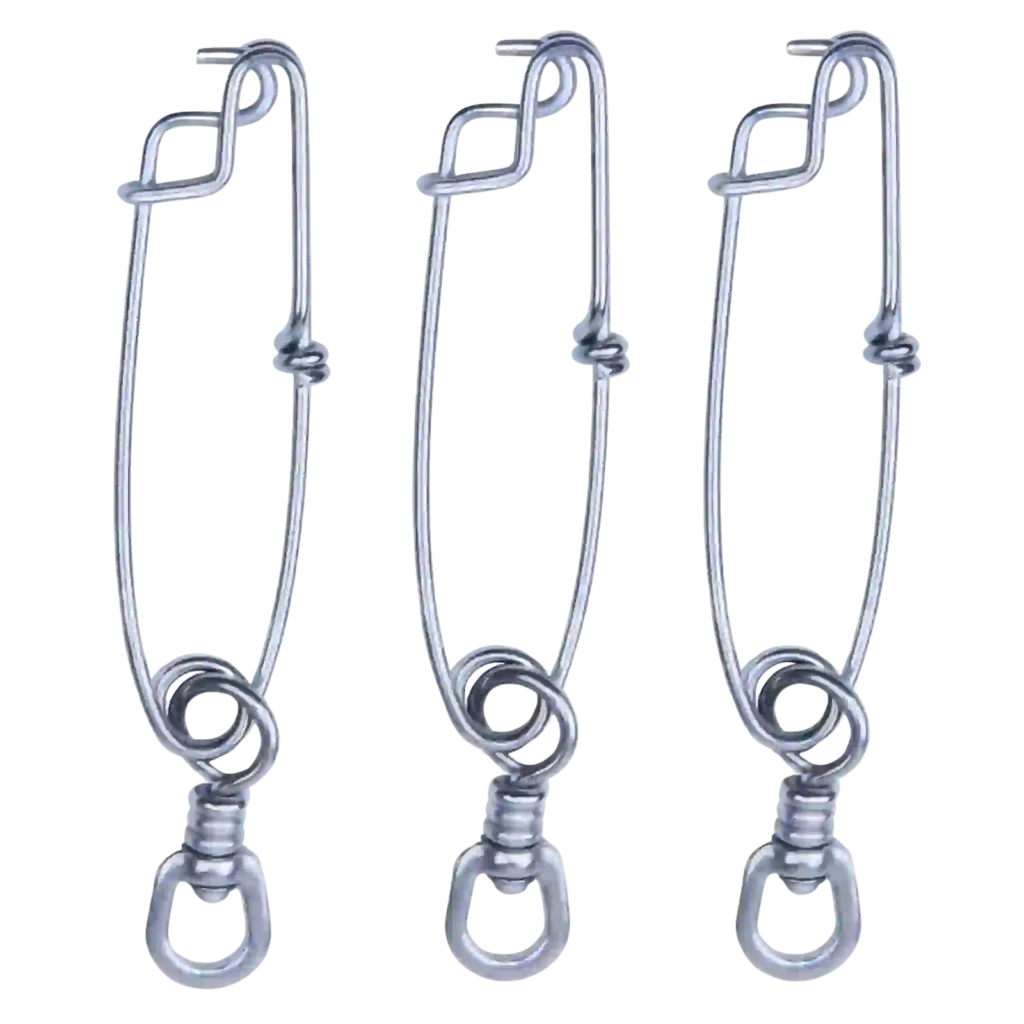
These swivels are a combination of a swivel with a snap that is used for attaching lures, rigs, or any other fish tackle. They are helpful if you have to change your tackle quickly. However, these swivels can be bulkier compared to barrel and ball-bearing swivels. So, always make sure that they are strong enough for your target fish.
Sinkers for pier fishing:
Sinkers help get your bait or lure to the desired depth while keeping your fishing line steady during currents. This way you can cast more accurately. I have enlisted some useful sinkers in pier fishing.
Pyramid sinkers:

As the name suggests, they have a triangular shape with flat sides. If you are facing moderate currents, they will work well for holding the bottom position. A fun fact about these sinkers is that the pointy end provides stability by digging itself into the sand or mud.
Bank sinkers:

Do not confuse these sinkers with a storage bank. They have a cylindrical shape that makes them ideal for pier fishing if you are facing minimal current. These sinkers are effective at preventing your bait from drifting. Their design makes them stay in place on the bottom.
Sputnik sinkers:
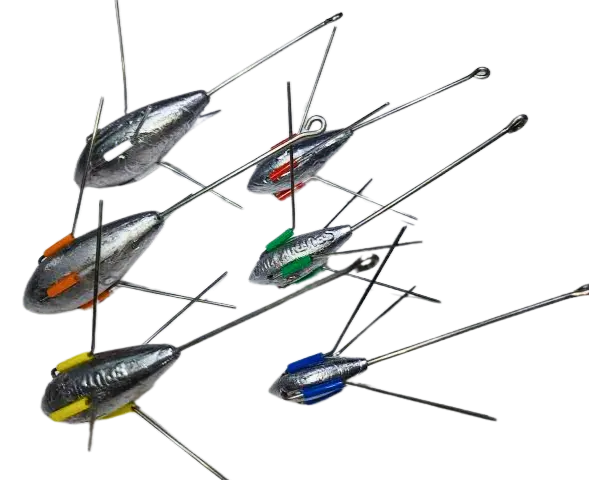
These sinkers have a professional and specialized vibe to them. They have a unique design with wire arms or spikes that extend from a central weight. If you are looking for a sinker that can anchor your bait in sandy or soft-bottom areas, then go for Sputnik sinkers. They are also very less likely to stuck in rocks or debris.
Egg sinkers:

As the name suggests, these sinkers are known for their oval and egg-like shape. However, they are not completely round as they have a hole through which your fishing line can pass. They are known for their versatility and they work well in various fishing conditions. The good thing about these sinkers is that you can adjust the size of the hole to change the sinker’s position on your line.
Floaters for pier fishing:
Floaters help you indicate when a fish is biting. They suspend your bait at a desired depth and keep your fishing line away from underwater obstacles. I have gathered some useful floats for you to look at.
Cork floats:

These are traditional floaters that are widely used for pier fishing. What makes them famous and so old is that they are lightweight and are good at providing excellent visibility due to their bright colors. These floaters are attached above the bait or lure and they rise when a fish takes the bait.
Slip bobbers:

These floaters are known for their adjustability as they can move up and down the fishing line. If you are looking to fish at a specific depth, they are pretty useful. This is because you can easily adjust the depth to suit your requirements. Slip bobbers work well for various species including panfish and larger game fish.
Plastic ball floats:

These floaters are known for their durability and are known for providing excellent buoyancy. They are often used in saltwater pier fishing for larger fish. They can also withstand the corrosive effects of saltwater which makes them more durable than most of the floaters out there.
Rigs for pier fishing:
In the context of fishing, rigs refer to the combination of various fishing components that are arranged in a specific manner to target particular fish species and fishing scenarios.
High-low rig:
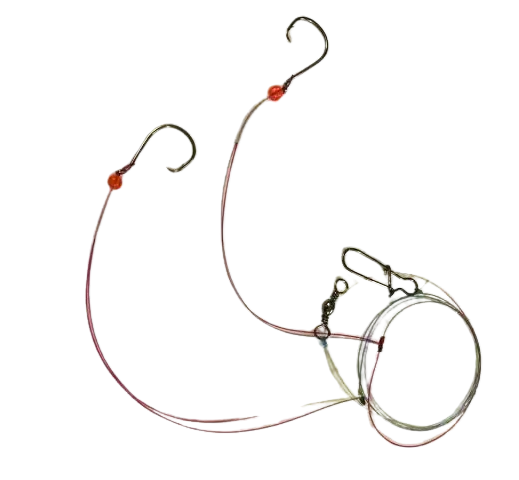
This rig is also known as the double dropper loop. This rig is known for its versatility when it comes to pier fishing. This rig consists of a mainline that has two or more dropper loops and each has a hook attached to it. You can bait the hooks with your choice of live or cut bait.
Fish finder rig:

This rig is also known as the sliding sinker rig. This rig is very useful if you want to keep your bait near the bottoms. A sliding sinker is attached to the mainline which comes above a swivel. Below the swivel, anglers attach a leader that has a hook and a bait. This rig is suitable for species like flounder, drum, and sheepshead that are bottom-feeding.
Carolina rig:
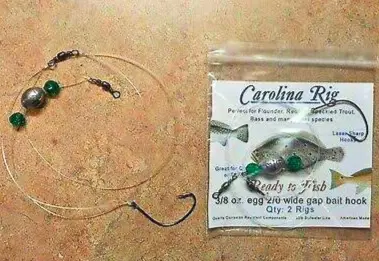
For bottom fishing, this rig is very effective. This rig has a sliding sinker which is usually followed by a bead and then a swivel. On the other hand, the swivel, anglers attach a leader with a hook and bait. This rig allows the bait to move more naturally with the current and suits fish like redfish, snook, and trout.
Sabiki rig:

The sabiki rig is used for baitfish imitations. It is a multi-hook rig with small and colorful lures. This rig is suitable for catching baitfish like cigar minnows, pinfish, and sardines. These rigs can then be used as live bait for larger species. Anglers often experiment with it during their pier fishing adventures.
Techniques involved in pier fishing

When it comes to pier fishing, you can choose from a variety of fishing techniques according to the environment and you’re required needs. I have enlisted some commonly used techniques below for you.
Casting and Retrieving:
Casting with lures is an efficient fishing technique for species that swim near the surface or in mid-water. Anglers utilize a variety of artificial lures, including soft plastics, spinnerbaits, and crankbaits. These lures are cast into the water, and when they are retrieved, they do so in a manner that resembles the movement of prey, luring fish to strike.
Topwater Fishing:
Anglers utilize surface lures like poppers, frogs, and buzz baits that stir up the water’s surface as topwater lures. This tactic tries to set off the explosive strikes of target fish as they target prey that is close to the surface.
Drop Shotting:
In a drop shot rig, a soft plastic bait or worm is suspended above the weight and a hook is tied above the weight. It is useful for finesse fishing since lures are presented at a particular depth, frequently close to the bottom.
Carolina Rigging:
This rig consists of a soft plastic bait attached to a leader with a sliding weight, bead, and swivel. In deeper water, it is frequently utilized since it is great for covering a large area of the bottom.
Trolling:
Anglers may utilize trolling techniques with diving plugs or crankbaits in larger bodies of water. To cover a wide area and find aggressive fish species, this technique includes trailing lures behind a moving boat, which the word trolling itself tells us.
Live Bait:
In pier fishing, some fishermen prefer luring fish with live bait like minnows, shiners, or nightcrawlers. Typically, these baits are cast with a bobber, a Carolina rig, or other live bait rigs to target the desired species. The presentation of the trap makes it easier to catch the curious target fish.
Sabiki rig fishing:
We have talked about sabiki rigs above they are multiple hook rigs that have small lures that are used to catch baitfish. Once you have successfully caught a bait fish, you can use it as a live bait trap for large and predatory species.
Suitable time for pier fishing

Time plays an important role in pier fishing as it can affect your fishing expedition. I have chalked out some guidelines below for you to follow.
Tides:
Tides are important in pier fishing as many species are more active during specific tidal phases such as the incoming tide and outgoing tide. We know that this phenomenon is known as “Tide Changes”. To know about these changes, you can check local tide charts. You can even take the help of the internet to determine when high and low tides are usually expected in your area. This can help you in narrowing down your approach such as baitfish and predatory species that come with the rising tide.
Sunrise and Sunset:
The lowlight conditions also play a very important role. Some fish are more active during less light. These times are also labeled as the “golden hours” for fishing. You can find predatory fish like snook, tarpon, and trout easily during this period. Another plus point of sunrise sunset is that the temperature is relatively cooler which can provide you with a lot of comfortability.
Seasons and weather:
Through research, you will learn that different fish species have peak seasons as well. The respective species are more abundant and actively feeding during those seasons. Similarly, weather plays a crucial role as well. For instance, overcast days or light rain can make the fish more active whereas many species tend to move towards deeper water when the light is too bright.
Crowding:
Crowded piers can also affect your fishing adventures. Some anglers may not choose to be there when the place is crowded. So, if you prefer a quiet environment, consider fishing during the weekdays or the off-peak hours. You can also get help from the internet.
Tips for pier fishing

To make your fishing experience memorable, you should always have some beforehand knowledge. I have gathered some extra tips for you that might be able to help you.
1) Before heading towards your pier fishing journey, have some knowledge about the rules and regulations. Know about the closing and opening seasons, know the size and bag limits, etc. You need to comply with local regulations to be a responsible angler.
2) Know what your target fish will be and choose the right gear for that. You should also be aware of the conditions and environment. Don’t take too much stuff with you as this can be a burden. Just make sure that you have an appropriate fishing rod, reel, line, etc. You can also match your gear with the fishing techniques that you tend to use.
3) If possible, try experimenting with fresh bait. You can try using live bait or recently caught fresh fish for this. I’m adding this because fresh bait is more appealing to fish and this can increase your chances of a successful catch.
4) Try to make yourself knowledgeable about the local trends. Gather information about recent catches, hotspots, techniques, etc. You can consult your fellow anglers as well.
5) As mentioned above, do try fishing during the sunrise and sunset. This can improve your fishing experience.
6) Always keep yourself up to date regarding the weather and seasonal conditions. Know about the wind speed, wind direction, temperature, and even the barometric pressure. The weather change can effectively influence the fish’s presence.
7) Make sure that you have the right hooks for catching fish. Also, match the hook size to the bait that you have chosen. For instance, many anglers prefer circle hooks as they are suitable for several species.
8) Be patient. Try to be calm as fishing can be exhausting at times. Don’t lose your calm if a catch misses. Focus more on learning than the results.
9) Be safe. Watch your steps on the pier and also follow the safety precautions. You can also keep a first aid kit with you whenever you are heading towards the pier.
10) Do not discard the bait irresponsibly. Make sure that you are disposing of the trash and the old line carefully. Cleaning your environment is necessary. So, respect your environment and respect the fellow anglers around you. Try to be as friendly as possible, as the world outside needs more positivity today.
Final words
Finally, I will sum up with this you can choose a variety of fishing rods and gear to go for pier fishing. Do not be afraid of trying different rods and different techniques. Be adventurous and try getting the most out of your fishing adventures.
